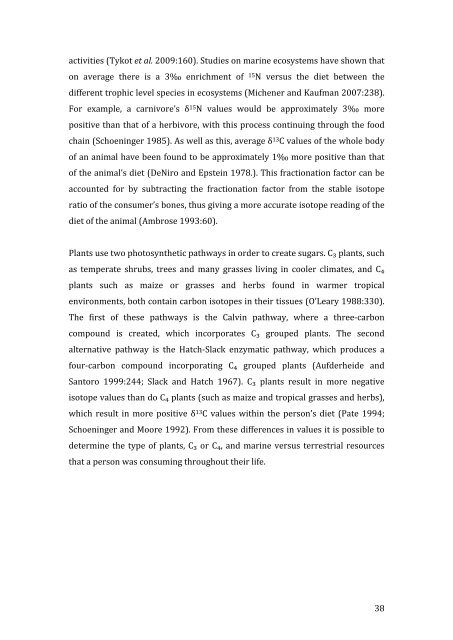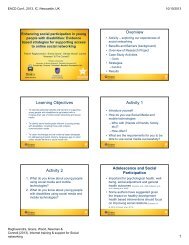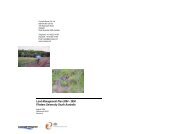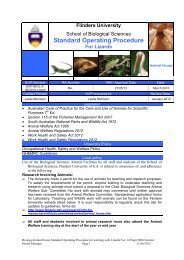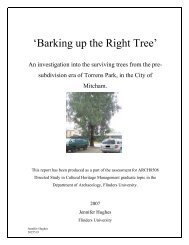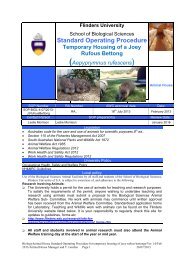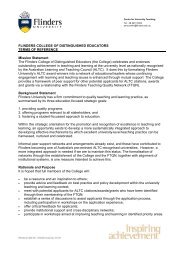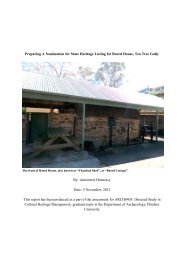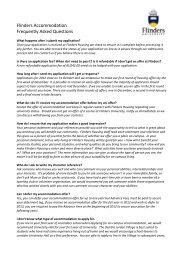Stable Carbon and Nitrogen Isotopic Analysis of Skeletal Remains ...
Stable Carbon and Nitrogen Isotopic Analysis of Skeletal Remains ...
Stable Carbon and Nitrogen Isotopic Analysis of Skeletal Remains ...
Create successful ePaper yourself
Turn your PDF publications into a flip-book with our unique Google optimized e-Paper software.
activities (Tykot et al. 2009:160). Studies on marine ecosystems have shown that <br />
on average there is a 3‰ enrichment <strong>of</strong> 15 N versus the diet between the <br />
different trophic level species in ecosystems (Michener <strong>and</strong> Kaufman 2007:238). <br />
For example, a carnivore’s δ 15 N values would be approximately 3‰ more <br />
positive than that <strong>of</strong> a herbivore, with this process continuing through the food <br />
chain (Schoeninger 1985). As well as this, average δ 13 C values <strong>of</strong> the whole body <br />
<strong>of</strong> an animal have been found to be approximately 1‰ more positive than that <br />
<strong>of</strong> the animal’s diet (DeNiro <strong>and</strong> Epstein 1978.). This fractionation factor can be <br />
accounted for by subtracting the fractionation factor from the stable isotope <br />
ratio <strong>of</strong> the consumer’s bones, thus giving a more accurate isotope reading <strong>of</strong> the <br />
diet <strong>of</strong> the animal (Ambrose 1993:60). <br />
Plants use two photosynthetic pathways in order to create sugars. C₃ plants, such <br />
as temperate shrubs, trees <strong>and</strong> many grasses living in cooler climates, <strong>and</strong> C₄ <br />
plants such as maize or grasses <strong>and</strong> herbs found in warmer tropical <br />
environments, both contain carbon isotopes in their tissues (O’Leary 1988:330). <br />
The first <strong>of</strong> these pathways is the Calvin pathway, where a three-‐carbon <br />
compound is created, which incorporates C₃ grouped plants. The second <br />
alternative pathway is the Hatch-‐Slack enzymatic pathway, which produces a <br />
four-‐carbon compound incorporating C₄ grouped plants (Aufderheide <strong>and</strong> <br />
Santoro 1999:244; Slack <strong>and</strong> Hatch 1967). C₃ plants result in more negative <br />
isotope values than do C₄ plants (such as maize <strong>and</strong> tropical grasses <strong>and</strong> herbs), <br />
which result in more positive δ 13 C values within the person’s diet (Pate 1994; <br />
Schoeninger <strong>and</strong> Moore 1992). From these differences in values it is possible to <br />
determine the type <strong>of</strong> plants, C₃ or C₄, <strong>and</strong> marine versus terrestrial resources <br />
that a person was consuming throughout their life. <br />
<br />
38


